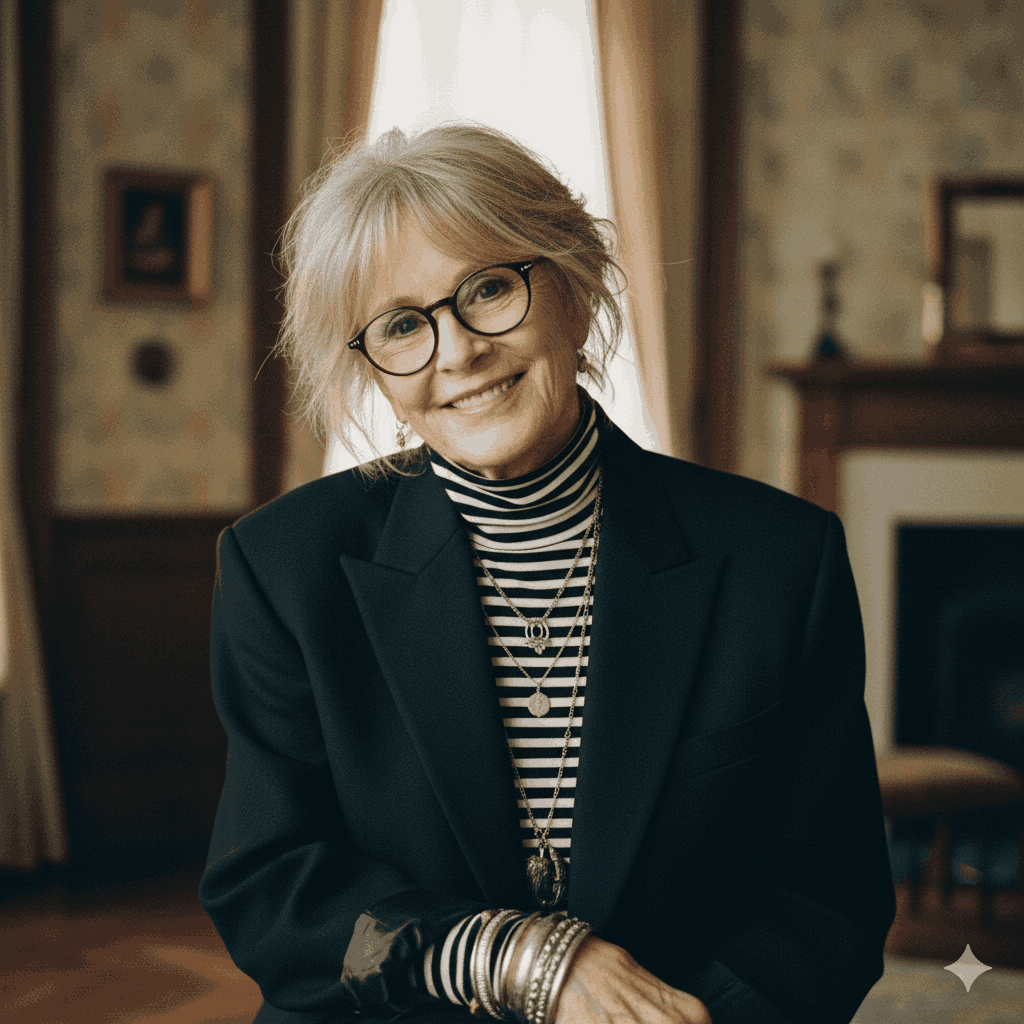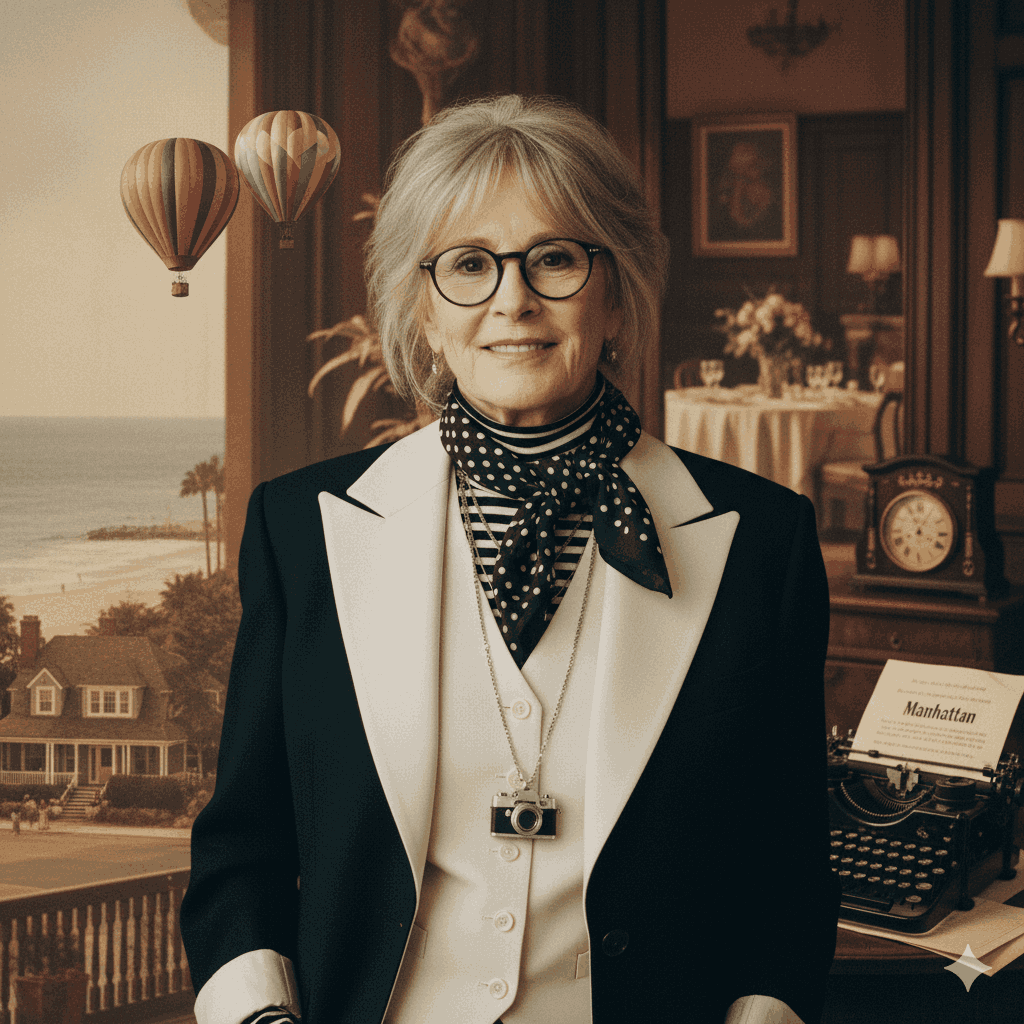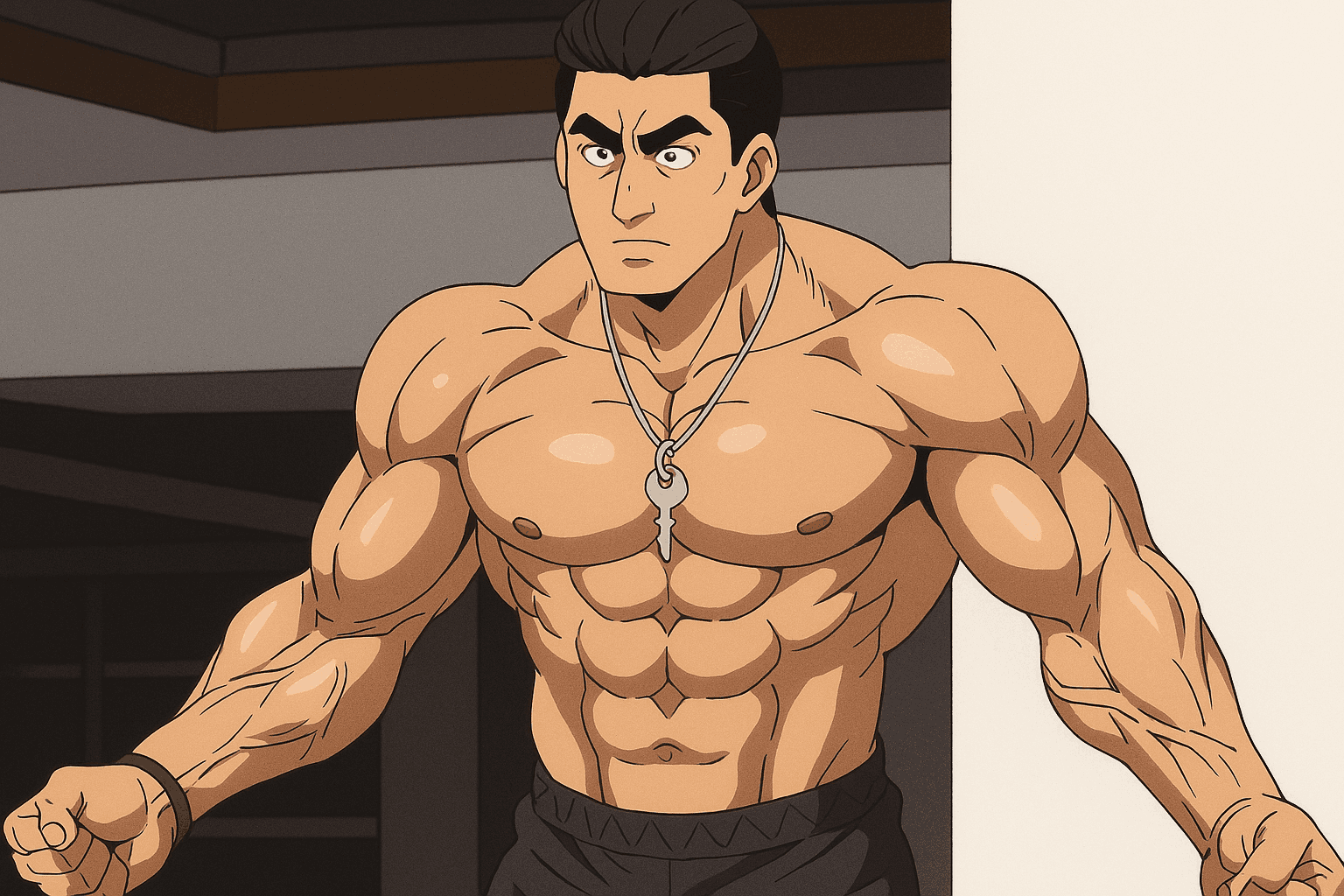
Table of Contents
- Early Life & Ambition
- Breaking Into Acting: Early Roles
- Annie Hall & Stardom
- Career Diversity & Lifelong Reinvention
- Style, Identity & Public Persona
- Personal Struggles & Resilience
- Later Years: Motherhood, Age & Creative Fulfilment
- Impact & Legacy
- Final Reflections
Early Life & Ambition
Diane Keaton was born Diane Hall on January 5, 1946, in Los Angeles, California. (Encyclopedia Britannica)
Her mother, Dorothy, was a diarist, photographer, potter, and collagist. Keaton has said that watching her mother’s attempts at recognition greatly shaped her own dreams. (AARP)
At 19, she moved to New York to study acting at Santa Ana College and then at the Neighborhood Playhouse. She was determined to make it in theater and film. (Encyclopedia Britannica)
Breaking Into Acting: Early Roles
Keaton’s first big break came on stage, in the Broadway musical Hair. She then understudied leading roles and gradually built confidence. (AARP)
Her film debut came with Lovers and Other Strangers (1970). She then appeared in The Godfather (1972) which gave her visibility and dramatic credibility. (Encyclopedia Britannica)
Annie Hall & Stardom
1977 was a watershed year. Keaton starred in Annie Hall, directed by Woody Allen. She won the Academy Award for Best Actress for that role. (Encyclopedia Britannica)
In the same year, she showed her range in Looking for Mr. Goodbar, a darker, more dramatic film. (Encyclopedia Britannica)
These roles introduced the blend of quirk, humor, vulnerability, and strong personality that would come to define much of her work. (Encyclopedia Britannica)
Career Diversity & Lifelong Reinvention
Keaton didn’t stick to one kind of role. She moved between comedy and drama, from lighthearted parts to deeper, emotional ones. (Encyclopedia Britannica)
Films like Reds, Shoot the Moon, Baby Boom, Father of the Bride, Something’s Gotta Give all show different shades of her talent. (Encyclopedia Britannica)
She also directed, wrote, explored photography, and published memoirs and books about design and lifestyle. (Wikipedia)
Style, Identity & Public Persona
One of the things people remember most about Keaton is her unmistakable style: floppy hats, menswear influences, turtlenecks, wide-legged trousers. (The Times of India)
She embraced awkwardness, imperfection, and individuality. She turned what many see as odd into signals of authenticity. (The Times of India)
She never married. She had high-profile relationships (with Woody Allen, Al Pacino, Warren Beatty), but defined her life more through her work, her choices, and later motherhood through adoption. (Republic World)

Personal Struggles & Resilience
Keaton’s road wasn’t always smooth. She suffered from bulimia in her early years, especially during the time she was involved in Broadway and early theater. (EL PAÍS English)
She has been open about emotional pain—feelings of isolation, pressure, and struggling with self-esteem. Yet she used those experiences not to retreat, but to inform her work. (AARP)
Later Years: Motherhood, Age & Creative Fulfilment
In her 50s, Keaton adopted two children—Dexter (in 1996) and Duke (in 2000/2001). (Republic World)
She continued making films, taking on roles that explored themes of aging, beauty, love, loss. She published memoirs (Then Again, Let’s Just Say It Wasn’t Pretty, and others) and pursued other passions like photography. (Encyclopedia Britannica)
She has often said that this stage of life is fulfilling, embracing joy in simple things, and staying true to herself. (datebook.sfchronicle.com)
Impact & Legacy
Keaton changed what it meant to be a leading lady. She didn’t fit the typical mold—she was sometimes awkward, always real, often funny, and capable of depth. (The Times of India)
Her style influenced fashion. Her roles influenced how women could be portrayed: complex, imperfect, resilient. (The Times of India)
Her creative voice outside acting—memoirs, books, design—added new dimensions to her influence. (Encyclopedia Britannica)
Final Reflections
Diane Keaton lived a life defined by courage: the courage to be different, imperfect, real. She faced public scrutiny, personal struggles, love, loss, creative highs and lows. But she held onto her identity.
She showed that success in artistry is not just fame or awards. It’s authenticity. It’s longevity. It’s choosing your path rather than being defined by expectations.
Her journey reminds us that ups and downs don’t cancel out—they build the person, the artist, the icon. And her work, her voice, will continue to inspire.



